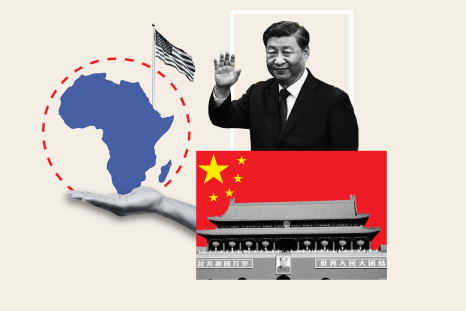Your support helps us to tell the story
Support NowAs your White House correspondent, I ask the tough questions and seek the answers that matter.
Your support enables me to be in the room, pressing for transparency and accountability. Without your contributions, we wouldn't have the resources to challenge those in power.
Your donation makes it possible for us to keep doing this important work, keeping you informed every step of the way to the November election

Andrew Feinberg
White House Correspondent
Heavy gusts of winds swept through a central Chinese city, sending people’s laundry flying, after authorities artificially stimulated rainfall to break a severe heatwave.
The unexpected winds of up to 122kmph in Chongqing, dubbed the "9/2 Chongqing underwear crisis", prompted speculation that cloud seeding was responsible for the scattering of laundry left out to dry in highrise apartments.
Cloud seeding is used to artificially stimulate rainfall by dispersing chemicals like silver iodide into clouds. First developed in the 1940s, cloud seeding has been utilised in over 50 nations worldwide, including China, the US, Australia, Thailand, and Russia.
The technique was most recently deployed in the UAE, which was hit by a year’s worth of rainfall in just a few days earlier this year, causing severe flooding in the desert nation. The internet was rife with speculation that the freak weather event was caused by “cloud seeding”, but experts cited global warming as the likely cause.
In China, authorities have maintained that cloud seeding generated rainfall, but did not cause the subsequent strong winds.
Zhang Yixuan, deputy director of the Chongqing Weather Modification Office, attributed the strong winds to naturally occurring convection.
Residents remained sceptical, sharing their experiences on social media. "I just went out and it suddenly started to rain heavily and underwear fell from the sky,” a resident named Ethele said on Weibo.

The incident sparked thousands of comments about the "underwear crisis". A hashtag suggesting "if you think you messed up at work, just think of the Chongqing Meteorological Bureau” garnered 18 million engagements, reported The Guardian.
The cloud seeding measures were deployed after a week-long heatwave delayed the return to schools and universities in the region.
Nearly 200 cloud-seeding rockets were fired, resulting in rain.
In a separate development, China’s Meteorological Administration conducted a cloud structure detection experiment in Xinjiang’s Bayanbulak area from 29 August to 3 September, utilising a big drone to enhance cloud-seeding capacity and improve ecological conditions, Xinhua reported. The drone, with a 20.2m wingspan, can fly for up to 40 hours and cover 8,000km.
According to Cai Miao, a staffer at the agency, the drone’s detection system enables precise identification of precipitation timing and conditions, boosting cloud seeding capacity.
"Deploying drones in precipitation operations improves regional ecological environment, vegetation growth, and water conservation capacity," Mr Cai said.
Disclaimer: The copyright of this article belongs to the original author. Reposting this article is solely for the purpose of information dissemination and does not constitute any investment advice. If there is any infringement, please contact us immediately. We will make corrections or deletions as necessary. Thank you.




